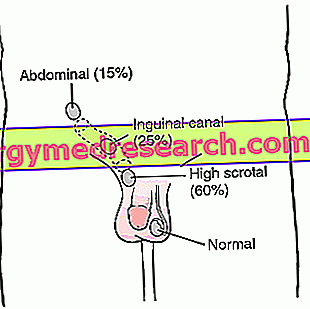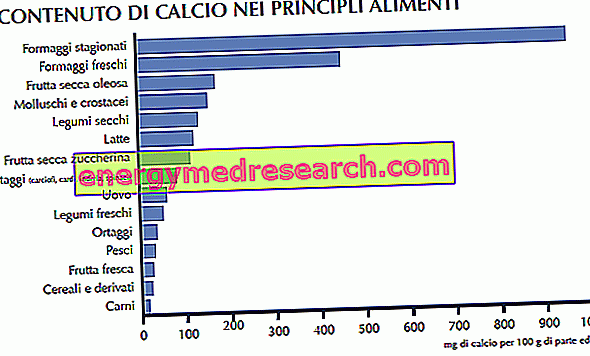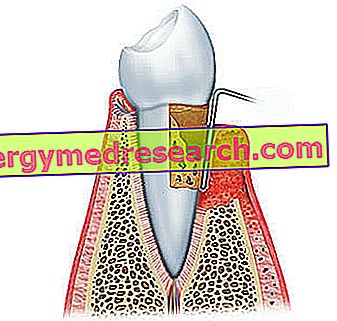What is cryptorchidism?
Cryptorchidism outlines a pathological condition in which one or both testicles are not visible inside the scrotal sac and, in some patients, are not even palpable. As we have analyzed in the disquisition of the previous articles, criptorchidism is not only a congenital disease, but can also exist in a rare, albeit possible, acquired form. In the discussion of this article, we will focus on the symptoms of cryptorchidism and on possible therapies, useful for the patient's remission from this particular pathological condition.
Symptoms
Criptorchid disease does not give a particular symptomatology and, generally, does not cause any pain to the patient: so much so that we speak of "practically absent subjective symptomatology".

The appearance of further more eloquent symptoms, such as the torsion of the retained testicle, is linked to further complications of cryptorchidism.
[taken from pediatric surgery. Approach and management of the child with surgical problems of GB Paris].
Hypogonadism and impotence are two other complications that complete the symptomatic picture of cryptorchidism, especially in the case of severity.
Rather than talking about actual symptoms, infertility and the possible neoplastic evolution of the epididymis, which may derive from cryptorchidism, should be understood as the most serious complications of the disease.
Diagnosis
As can be guessed, the diagnosis of cryptorchidism is not particularly complicated, upside down: in particular, in cases of unilateral cryptorchidism without hypospadias (abnormal development of the urethra), laboratory tests are not indispensable, since the doctor evokes the patient's disorder. On the other hand, there is a different situation in bilateral or unilateral forms of cryptorchidism with hypospadias, in which laboratory diagnostic tests, considering the possibility of an anorchia (absence of both testicles), are almost essential: LH, FSH, cariogramma ( representation of the chromosome set of a cell / individual) and evaluation of pre / post stimulation testosterone with hCG (Human chorionic gonadotropin). [taken from pediatric surgery. Approach and management of the child with surgical problems of GB Paris].
therapies
Although it does not involve particular symptoms, cryptorchidism cannot and must never be underestimated or minimized: when ignored, in fact, it could cause the lack of development of the seminal tissue, therefore a progressive atrophy of the testicle and a poor production of spermatozoa / azoospermia, which inevitably leads to total and irreversible sterility. Strictly speaking, the patient should undergo specific therapies aimed at the descent of the testicle; therapies are indispensable to avoid damage to sperm production, as these could start already in childhood, thus affecting adulthood. Furthermore, therapeutic strategies against criptorchidism are also considered for the prophylaxis of neoplasia at the genital level.
It should be remembered that in about 75% of children suffering from monolateral cryptorchidism, the retracted testicle tends to descend spontaneously within the scrotal sac within the second year of life, without the need for surgery or hormonal administration. Therefore, the therapeutic procedure should never be undertaken before 6/12 months, ending no later than 18-24 months of life.
Let us now see, in detail, what the various therapies for redeeming the patient from cryptorchidism consist of:
- in the event that the testicle has not already descended spontaneously within the second year of life, the small patient is generally subjected to a medical therapy (administration of gonadotropins): hormonal therapy is aimed at the early restoration of the testicle inside the bag scrotal. For those children suffering from cryptorchidism, the administration of gonadotropins within the second year of life is fundamental: in fact, the alterations of the seminiferous cells, in the testicle, appear very early, therefore postponing the therapy, the risk of repercussions during adulthood increases enormously.
- If the hormonal administration is not sufficient or ineffective, it will be necessary to intervene with a surgical therapy known as orchiopessia, in which the retracted testicle, or both, are surgically fixed inside the scrotal bursa.
- When therapeutic strategies are undertaken too late, the testicle considered may undergo neoplasia: in similar situations, the removal of the sick gonad is recommended.
Reflections
When cryptorchidism is underestimated, and due care is not given to the affected child, during adulthood he may complain of fertility problems, not because he was not treated, but because he was treated too late . It is shameful that these errors that affect the patient's future life are still so common these days. The medical class, therefore, should be more sensitized in this regard: cryptorchidism is a problematic pathological condition which, when left untreated, could seriously endanger the patient's fertility, irreversibly.



